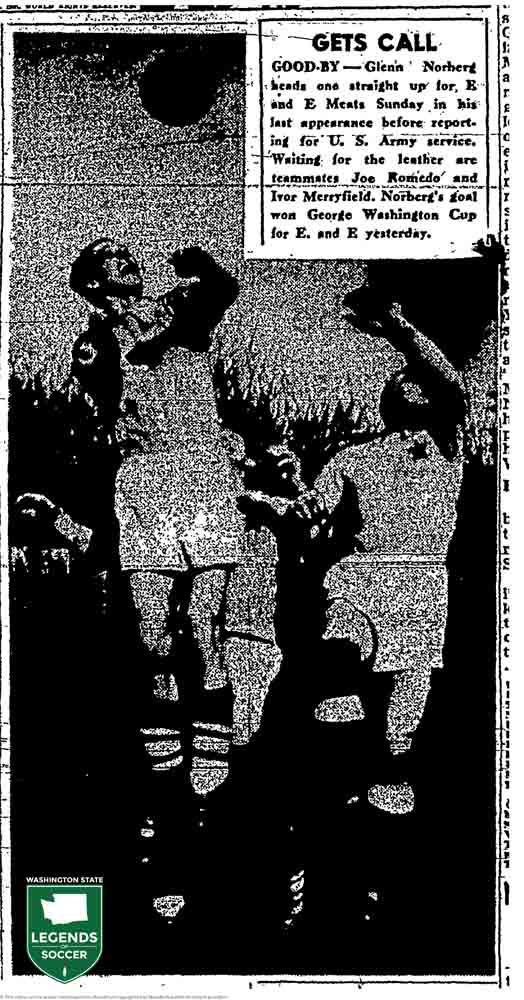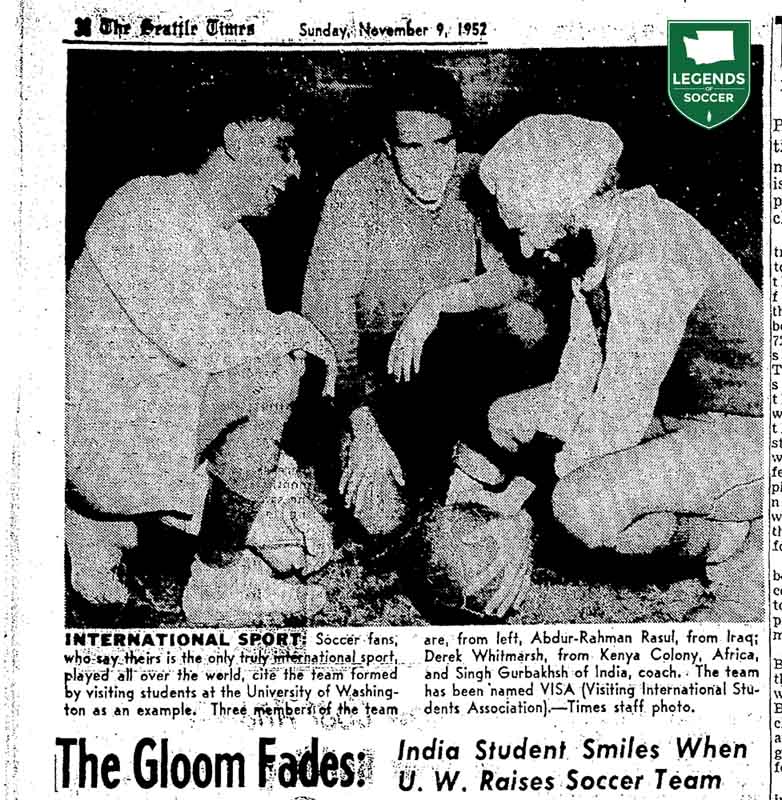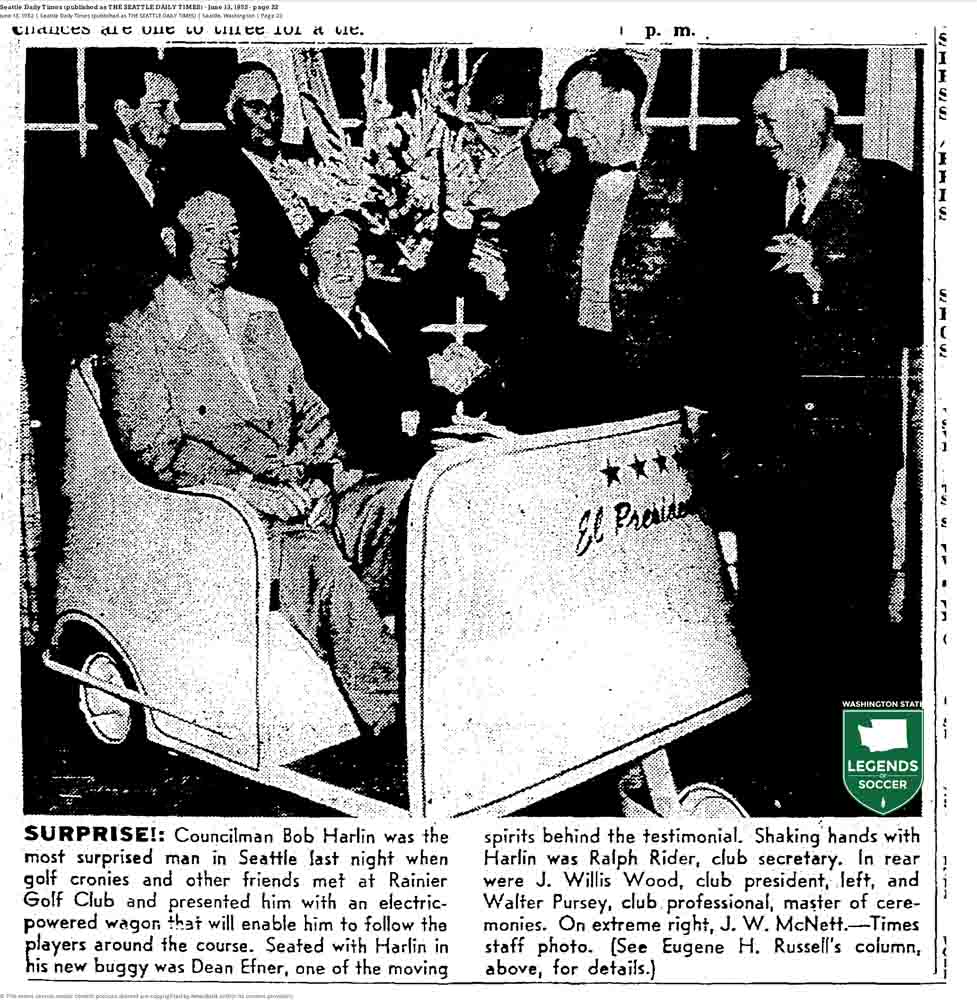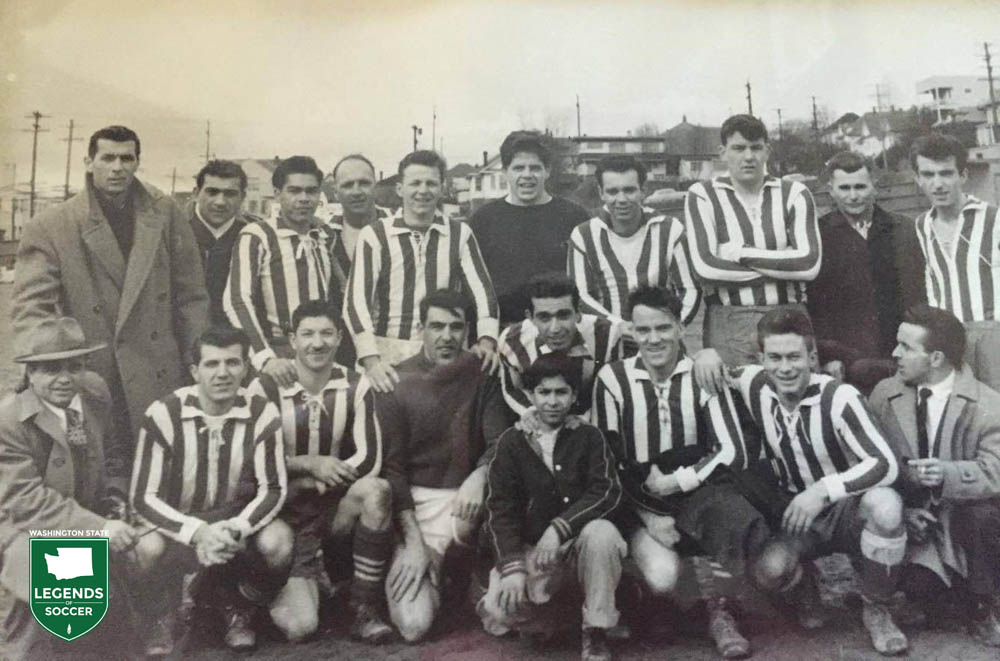1952 – Around the World and Close to Home
Elizabeth II assumes England’s throne following the death of her father George VI. General Dwight Eisenhower wins the U.S. presidency in a landslide. General Motors begins offering air conditioning in its cars. The Today Show, television’s first magazine-format program, debuts on NBC. Around Washington, Henry Jackson of Everett defeats incumbent Harry Cain to win a U.S. Senate seat. The Frye Art Museum and Museum of History and Industry (MOHAI) open in Seattle. Johnny and Eddie O’Brien lead Seattle University to a win over the Harlem Globetrotters.
Scandinavians Unite
Some clubs are renowned for trophy-gathering, others for longevity. For Washington’s Scandinavian teams of the 1900s it was both: A lot of silver over a multi-generational span.
Soccer’s first half-century of play throughout Puget Sound and Washington blended ethnicities from around the world. At first it was very British, but by the end of the Fifties the thick Scottish brogue, Irish dialect or English accent were receiving keen competition in the need for subtitles at Sunday afternoon games and kickabouts.
Perhaps the most polyglot club in Washington’s State League was the Vikings. The mix of mostly Swedes, Danes, Finns and Norwegians competed under that flag, plus a host of sponsors, from the Roaring twenties into the Me Decade of the Seventies. During that time, the mighty Vikings were victorious in over 25 cup competitions, including a record eight Northwest championships.
Washington became the destination for thousands of Scandinavian immigrants after the turn of the 20th century, partly because they felt familiar with the climate and topography. Their skills were also a match for the logging and fishing industries. Seattle’s Ballard neighborhood proved a rallying point for its immediacy to the mills and docks.
In addition to social clubs, the Viking Athletic Club was founded in the 1920s. While it organized various activities and sports for both youth and adults, its focus was soccer. In addition to the men’s state league representative, for a brief time a women’s team was sponsored, in 1929.
Sponsoring businesses and their associated teams would come and go in the senior amateur ranks. But the Vikings were an unrivaled connection to the Scandinavian community and competitive consistency. Apart from World War II, when many playing-age men were either enlisting or working to support the Allied war effort, they could be found near or at the top of the first division table.
Formed in 1924, this Nordic tribe truly came into its own beginning at the onset of the Fifties. Following some success in the second division, the Montag Vikings claimed a couple of state titles prior to World War II, when they disbanded. When they resurfaced in 1948 it was as Acme Tyee, a lumber and millwork business owned by Norwegian-born H.W. Hansen. Managed by Vic Olson, they won a state and Northwest champion by their second season.
Scandinavian-owned businesses, from restaurants to realtors to social clubs, would always step up to support the club and the league. Ballard’s Norselander Restaurant, Norway Center and the Nordic Lodge would host the season-ending awards banquet. Sailors from Scandinavian merchant ships would often be brought ashore to play at Lower Woodland. In 1951, AIK became only the second European club to stop in Seattle. Paying the freight for the Stockholm side was a consortium of businessmen featuring Swedish-born Einar Carlson, Axel Thornberg and Ivan Anderson, plus Norwegian immigrant Austin Gundersen.
Gundersen had already made a name for himself on the pitch. He was regularly rated among the top players, and in 1949 he was among the local all-stars to face England’s touring Newcastle. Erling Hansen, formerly with the Norway Air Force, was a candidate for the 1950 U.S. World Cup squad. Other Super Scans included Thor Ronning, Austin Strom, Tore Volan, Per Petersen, Reidar Olsen and Thor Aanes.
Before the Vikings’ flame flickered out, they became one of the first local clubs to venture into the National Challenge Cup fray. The Leif Erikson team reached the regional finals in 1970.
 1951
1951




